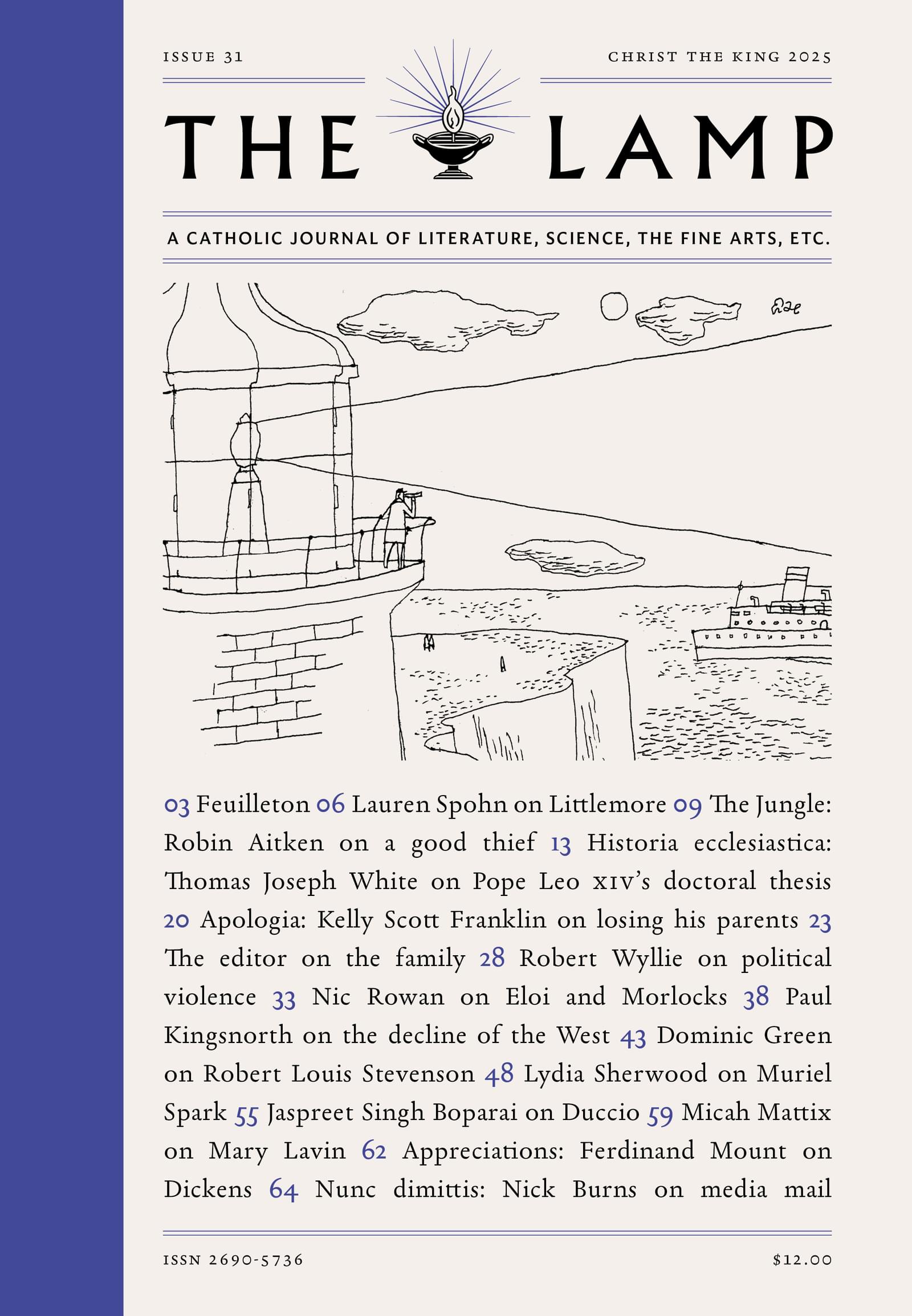Sacré-Coeur and Amélie
Every October, brilliant red and orange leaves fall to the ground in an annual reminder of our mortality, perfectly placed for us to discover the spirit of childlike wonder and love marked by the feast of Saint Thérèse. The air is crisp and dry; it is windy, but not cold, transforming over the course of thirty-one days to winter’s wet misery.
French schools take two weeks of vacation around All Saints’ Day, a holy day of obligation and, to the surprise of virtually all Americans, a national holiday in France. Last year presented a special opportunity for traditional French Catholics: the closure of the jubilee of the consecration of Sacré-Cœur with a solemn Mass in the traditional rite—the very same in which the consecration was celebrated in 1919. So I made my second pilgrimage to the holy hill, where Saint Denis, the first bishop of Paris, was martyred; he continued to speak even after being beheaded, finishing his speech only at the site upon which the royal basilica dedicated to the martyr would be built, some five miles to the northeast.
More recently, the last abbess of Montmartre, Marie-Louise de Montmorency-Laval, went to the scaffold in July 1794, just days before Robespierre lost his own head in Thermidor, year II, and the revolutionaries of the Paris Commune executed Georges Darboy, Saint Denis’s successor, on Montmartre itself at the end of the army’s siege in 1871. This is a sin for which we make reparation at the Basilica of the National Promise of the Sacred Heart.
Indeed, the basilica is not simply “Sacré-Cœur,” as the shrine honors a promise made by Messrs. Alexandre Legentil and Hubert Rohault de Fleury, both faithful Catholics dedicated to the service of the poor via the Society of Saint Vincent de Paul. Legentil ran a store and translated the biographical notes of Beethoven written by his student Ferdinand Ries and childhood friend Franz Wegeler; Legentil’s brother-in-law Rohault de Fleury was an artist and architect. The two sought to make amends before the heart of Christ for the sins of France, which could be healed only by spiritual means. Legentil published the vow in the winter of 1870-71, even before the Commune began. This followed Napoléon III’s defeat in a disastrous, embarrassing war that led to the seizure of Rome by the Savoyard government, which then united the supposed kingdom of Italy without the consent of the Roman pontiff.
Cardinal Guibert chose Montmartre as the site for the proposed shrine, taking up the suggestion of the newspaper editor Louis Veuillot, a faithful Catholic and fervent antiliberal himself, and the Church acquired the land thanks to the National Assembly in 1873. Construction financed by modest gifts from across France commenced in 1875, and eucharistic adoration began in 1885; neither world wars nor pandemics have permanently interrupted this, even as Allied bombings blew out the windows of the basilica in 1944.
While the basilica was still under construction, two saints consecrated themselves to the Sacred Heart: Thérèse of the Child Jésus on her way to Rome in 1887, and Charles de Foucauld in 1889. Neither apostle of God’s burning love for mankind would live to see the consecrated church, with Thérèse dying in her cloister in 1897, and de Foucauld as a hermit in Algeria in 1916. Finally, Cardinal Amette, the archbishop of Paris, consecrated the basilica on October 16, 1919, in the presence of Cardinal Vico, the papal legate. The ceremony had been delayed five years due to the Great War.
Montmartre might mean “martyrs’ mount.” Or it might not, for it is unknown whether the name is derived from Mons Martyrorum or Mons Martis, “mount of Mars.” Regardless, this site of Celtic and Roman worship was claimed for Jesus Christ, the true light shining above the City of Lights—called so not because of the street lamps, but because of the Lumières, the philosophers of the Enlightenment. Soot covers the building, which nevertheless appears as white as snow, reflecting our souls filled with baptismal grace. Lavábis me, et super nivem dealbábor—the same words recited a century ago by the archbishop during the sprinkling of the very same walls claimed for God as the devil was expelled from within and without.
Thanks to Capetian generosity, churches fill the area. Louis VI built Saint-Pierre in 1166; centuries later several students from the University of Paris made vows there dedicating their lives to what would become the Society of Jesus; during the Revolution a Temple of Reason was installed, and the Russians took over the premises in 1814. The church was then abandoned for eighty years. Finally, an architect privately restored the edifice, which reopened for divine worship in 1908. Modern churches built for twentieth-century immigrants now spread across the landscape, and the hillside offers space for recreation.
This is my Montmartre. Today it is probably best known in the United States for supplying a plot device in a popular film, Jean-Pierre Jeunet’s Amélie, which stars Audrey Tautou as a quirky young Parisian. Viewers will remember that Amélie is a quiet woman, almost incapable of engaging other people without awkwardness, embarrassment, or misunderstandings. She inhabits a vivid world of fantasies and sensory impressions, haunted by memories, especially the admittedly tragic if unbelievable death of her mother, crushed by a tourist who leaps from the roof of Notre-Dame. Her solipsistic interior life—she does occasionally wonder about things, like whether married couples enjoy the conjugal act—is presented as something essentially charming, and we are meant to see her as a hero and perhaps even a role model. This is remarkable not least because Amélie is clearly unhappy.
Last fall, more than a hundred years after the consecration of Sacré-Cœur in a Paris troubled by the Great War and the Spanish Flu, the basilica was full. Not one empty place could be found, despite the best efforts of volunteers (including one usher clad in a hoodie and Jordan sneakers) to separate the laity, who were some four hundred strong even before the priest had whispered Introibo ad altare Dei. Scouts and guides carried banners of French saints and of the Virgin, and the faithful sang Mass VIII from memory. The Mass spoke for itself, and I was grateful that we could gather in Sacré-Cœur to close the jubilee year, knowing that some good had come from 2020 as we gathered to pray for the lost, the lonely, and the marginalized. If only Amélie had become a pilgrim.
Matthew Roth is a teacher in Paris.




